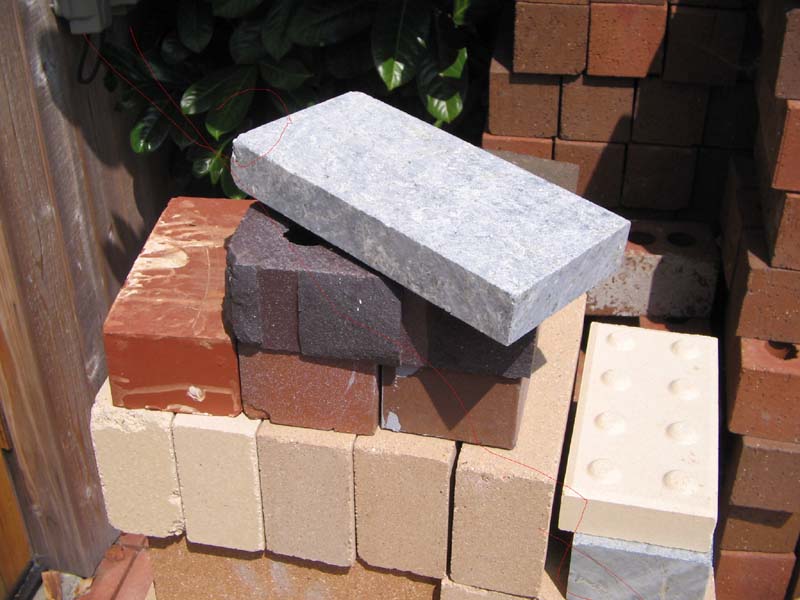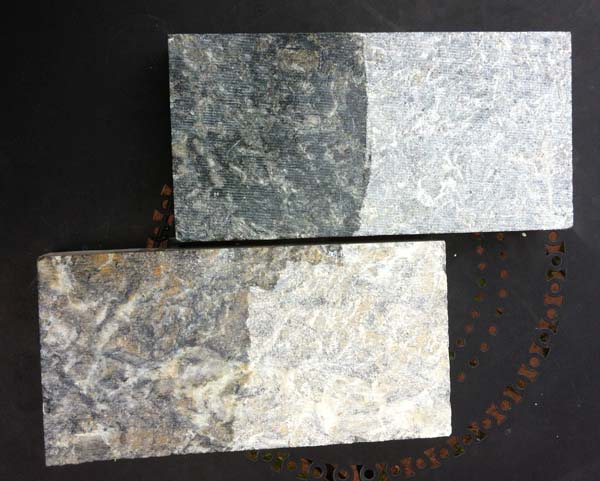Soapstone Properties
2/17/17

|
Soapstone Technical Data - Calculated from Traditional Oven The specific heat capacity of the soapstone comes to 785.2 J/Kg.¡K where the firebrick is at a lower 757 J/Kg.¡K heat storage. All is calculated @ room temperature level. Soapstone wins, it collects slightly more heat and gets hotter as well.
|
|
However, on the other side of the chamber - through the wall on the out-side opposite from the heat source, some suitable kind of thermal light-weight insulation has to be applied to prevent much of the heat energy loss. Otherwise the stored energy will run out into the opened air fast. When it comes to culinary arts practice aspects (and suitability of soapstone for contact with food) - speed of the heat energy being transferred from the heat source through the hot face into the body mass, and also (obviously), how much of the heat energy is retained as in storage, are important considerations. After the bulk is saturated by the heat it performs, cooks or bakes for a long time, from the initial heating up. Soapstone isn't toxic and it is material very suitable for contact with any foods. There is only one small negative aspect I can think of. Soapstone does not have porosity. If a material is not porous it will not absorb moisture. A steam for instance. Such particular non-porous characteristic, that in itself is wonderfully positive for baking or for using such structure outdoors in freezing climates. Hence, on the other hand, when fresh pizza base is placed on a heated soapstone surface, and if it's to be cooked rapidly - a method for producing the most delightful culinary results - the steam from under the fresh base isn't absorbed by the rock because it behaves as something highly glossy (a glass would do the same.) Much steam gets generated in the early moments of placing the wet base onto the hot floor surface. Therefore there is the chance of not achieving that desired higher crisp. Although do not fret yet. Here are a couple of ways for how to overcome this problem. One is to simply uplift the base 1 to 3 times within the first 10 to 15 seconds. Second is to create the center surface out of several pieces, which creates those little gaps in between the segments for the steam to run out. Low heat and mid range firebricks do have the optimal porosity so no any issues. There is always a way for how to develop, improve, service, fix, repair any subjects needed! When compared with firebricks, soapstone absorbs the heat faster and it also has bigger/better heat storage capacity. Soapstone gets a little more hotter too at the same time. The conclusions from an article in traditionaloven.com See also geology.com/rocks/soapstone.shtml
|

|
Sealing Soapstone From a discussion among masonry heater builders
|

|
From Paul Thompson, Vermont Marble, Granite, Slate & Soapstone Co. - WeÕve had good success using color enhancer products normally used to enhance coloration with marble, granite, and slate. With Soapstone it works in steps. With one coat the coloration of the stone is tinted, two coats begins to darken the stone, three coats will make it look like itÕs been oiled (very dark). The enhancer does not evaporate of dissipate at all when exposed to heat. Color Enhancer website Note: doesn't mention soapstone. |
|
From Norbert Senf - An interesting property of our soapstone counter tiles (Alberene), is that there is zero penetration of any staining. This is why they were traditionally used for laboratory countertops. You can take a section that has darkened and stained for years, put some dish detergent on it, and it comes back exactly like new. No penetration of the stain whatsoever.
|

Back to Soapstone
Buckley Rumford Fireplaces
Copyright 1995 - 2017 Jim Buckley
All rights reserved.
webmaster